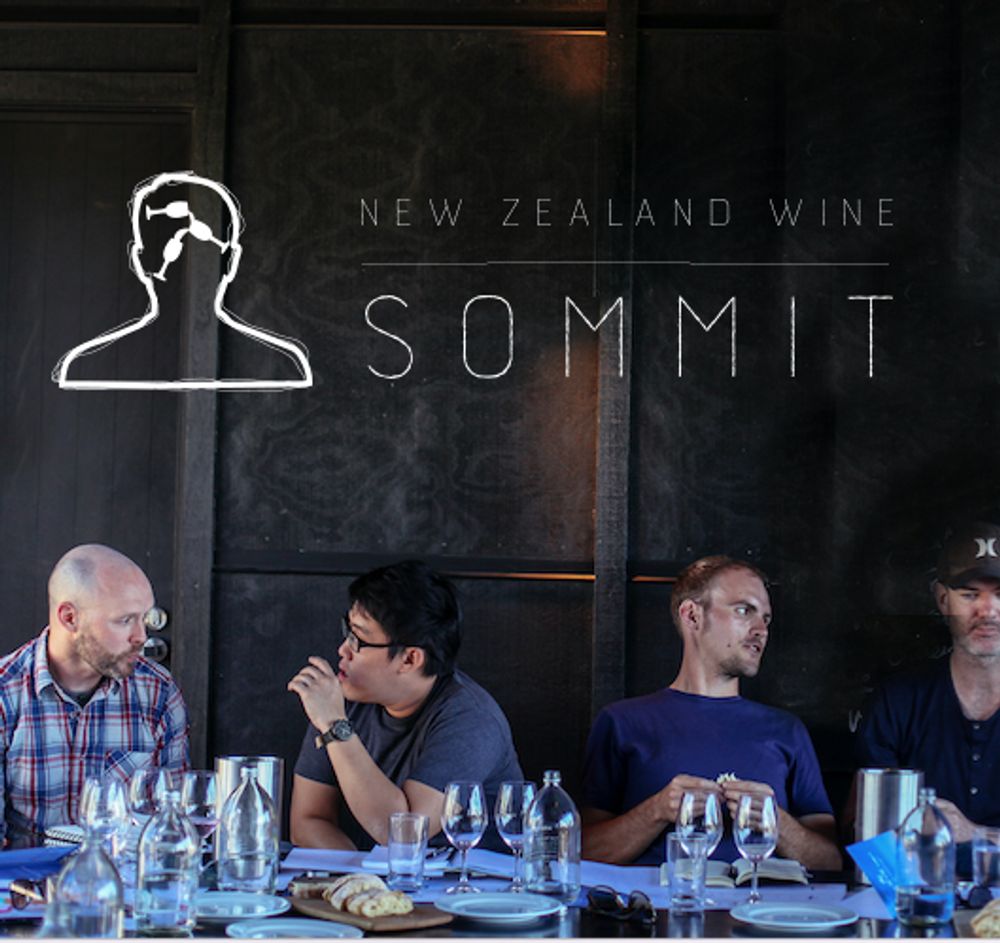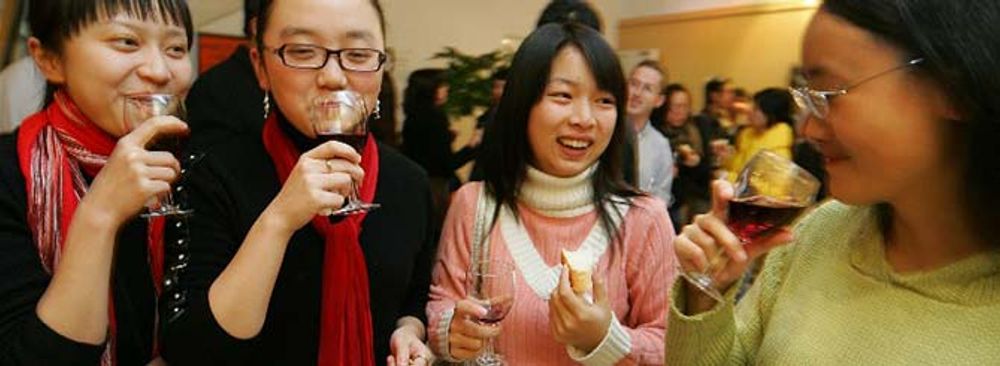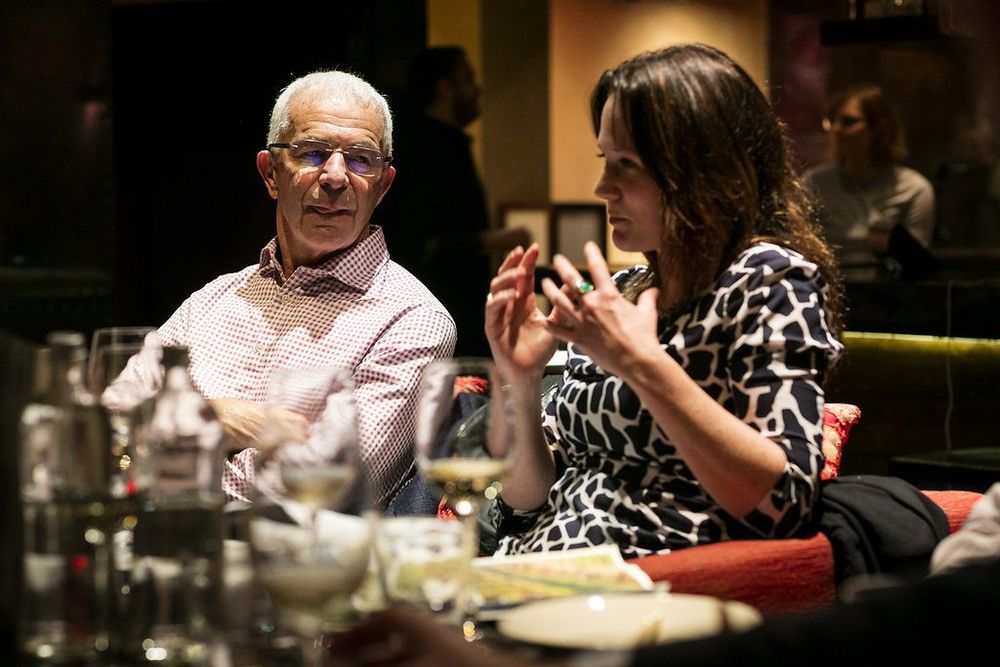There might only be room on the plane for a handful of you, but if you are chosen to fly to New Zealand to attend any of the coveted New Zealand Winegrowers events, with particular focuses on sommeliers, on-trade buyers and independent wine merchants, then that’s the time you know you are a person to be known in the wine trade, explains Richard Siddle.

It’s not about visiting wineries, it’s about people hearing and sharing stories with other people…New Zealand’s marketing strategy in a nutshell
We talk a lot about the need for businesses of all sizes to introduce a more personalised offer to their customers. To be able to find more ways to break down what you do and then offer a tailor made version of it to different target customers that is relevant and meaningful to them.
The days of a one size fits all approach to marketing is over. We want information delivered to us that we can relate to be it through social media, direct mail, mailers or right through to the point of sale.
This is very much the approach that New Zealand Winegrowers is looking to take in order to grow its already strong reputation as a quality wine producing country around the world.
You could argue it can afford to be more targeted in what it does as it makes so less wine than on other major wine producing countries, but that does not mean it is not the right approach to take.
Its strategy is clear. To create an international network of influencers, and ambassadors for its wines in all its key markets in two ways: by either going direct to those countries and holding special events, masterclasses, tastings and seminars aimed at those key people; or taking them to the other side of the world and inviting them to go and see the magic of New Zealand for themselves.
It’s why marketing strategy is not based on high profile, above the line marketing campaigns, but highly specialised, events, that give important buyers, importers, distributors, and retailers the chance to meet and hear directly from the producers making the wines they might want to buy.
Doing what it does best

New Zealand Winegrowers Chris Yorke says its focus is to target stories about what it does best to the most influential people around the world to tell them
It means hosting a series of set piece events that shine the light very much on what it does best.
For example it runs, on alternative years, trade summits looking at the developments it is making in its two flagship varieties: Sauvignon Blanc and Pinot Noir. A chance for its leading winemakers to meet some of the world’s biggest trade buyers and influencers in the hope that they will go back as individual ambassadors for what New Zealand is trying to do, explains Chris Yorke, global marketing director for New Zealand Winegrowers.
That approach has now been broadened out to focus on the two key trading channels it wants to expand. Namely the on-trade and independent, specialist retailers.
Sommelier Sommit
This year it is hosting two separate events starting in February with ‘Sommelier Sommit’ when 40 leading sommeliers from around the world will get the chance to visit, taste, discuss and see how relevant New Zealand wines are for the on-trade.
“It is a chance for sommeliers to see what we can do first hand, but also to meet fellow sommeliers, network with them and find out which New Zealand wines are working for them,” says Yorke.

The Sommit is a great chance for sommeliers around the world to get to know each other as well as New Zealand wines
Then in June it is doing a similar event for independent and specialist wine retailers from around the world, where again they will have the chance to meet fellow operators and see for themselves how New Zealand wines might become more important in their businesses, explains Yorke.
This will involve a “more hard edged look at the commercial” side of New Zealand wines, and include an initial conference looking at different topics and issues before taking the buyers out to wineries and different regions.
Making New Zealand relevant
He said by making such initiatives international it means they are relevant to more buyers based on their local needs. “If you are selling New Zealand Pinot Noir in the UK, for example, then you are likely to compare them to Burgundy Pinot Noirs. But if you are from the US, then you will be comparing them to what Pinots you can get in California and Oregon and Australians will be doing the same with their own Pinot Noirs,” explains Yorke.
It works hard to make these events as relevant and as useful as possible. All visitors, for example, are sent profiles of each other, including their social media addresses and emails so that they can start chatting and getting to know each other before they get to New Zealand.
The “Sommit” event includes a couple of intensive days of tastings and talks at the start of the trip to give all the sommeliers a chance to meet each other, unwind, get over the travelling before heading out and hitting the road and seeing producers.
It is one thing hosting such events and taking the trouble to get the best people to attend, but it’s also important to then follow up with them when they go home, adds Yorke. “How do we work with these ambassadors when they are back in their own markets?” asks Yorke.
Quality over quantity
This hands-on, but carefully thought through PR and marketing strategy is very much in keeping with the quality and style of wine it makes. Just a little bit more quality, a little more class, a wine producing country that is operating, mostly, just a little higher up the price ladder of the international wine market.
It is a strategy that is more than working. Over the last 20 years the New Zealand wine industry has achieved average annual export growth of 17% a year, according to the New Zealand Winegrowers annual report.
It has long had a target to NZ$2 billion of exports by 2020 and is well on track to do so with a record performance in the year to June 2017, with exports now at NZ$1.66 billion, up 6%.
What makes New Zealand’s performance even more impressive is that it is achieving those sales at the more premium price points, and is increasingly able to show that it can go almost toe to toe with France and Italy, two of the oldest and most established wine nations in the world, on value sales in most of its key export markets.
Yorke said it is critical it maintains and builds on its reputation as a country that produces quality, relevant and in demand wines.
Booming US sales

Major US cities like New York are very much on the radar for New Zealand as there is not only demand for premium wine, but bars and customers know the New Zealand story
It is a position that has seen it enjoy considerable success in what is now a key market for its wines, the United States and Canada. In fact the US has been its strongest growing export country, with sales now through the NZ$500m barrier, up 12% year-on-year, and accounts for 30% of all exports by value. It now sits behind only France and Italy in value sales.
“We have doubled our sales in the US over the last five years,” said Yorke. “It’s been quite phenomenal growth.”
The challenge, though, he added, is distribution and being able to really crack the three-tier system.
But the consumer response in the US to New Zealand has been very encouraging. “It’s driven by Sauvignon Blanc. The US wine drinker really seems to understand our messages around Sauvignon Blanc. We can then work Pinot Noir on the back of that,” he explained.
Its success in the US has been similar to what it has achieved in the UK, added Yorke, where it was initially the bigger brands that helped provide a platform for New Zealand in general, on which smaller producers have been able to build on. Effectively New Zealand Sauvignon Blanc has now become the brand, he stressed.
“It is the consistency and quality of New Zealand wine that US consumers trust, even if they don’t recognise the winery or producer,” said Yorke.
He felt the US was ready for what he called a “second wave” of activity and success for New Zealand where both brands and smaller producers can widen their distribution and reach across more states.
The bulk of its sales currently lie in California, Texas, Florida and the Eastern Seaboard.
“There is still a move in the US from beers and spirits to wine where New Zealand can really benefit.”

It’s the we’re all in it together mentality that New Zealand wants to create
Asia calling
Whilst Australia, its closest wine competitor, can only recently boast about signing a Free Trade Agreement with China, New Zealand can claim to be the first developed country in the world to do so back in 2008.
It means New Zealand is arguably further down the line than other countries in maximising its position in China, particularly in appealing and talking to younger wine drinkers, claimed Yorke.
He said New Zealand’s reputation for quality, but slightly premium wines, played well with the growing 25 years and above professional wine drinker. This is the new generation of engaged wine lovers who are not buying wine simply to show off to their friends and peers, or for gifting, like older, more traditional Chinese wine drinkers.
Instead they want to buy wine to drink and to share with their like minded friends. “The 25 plus age group are buying wines for how they taste, that’s been a big shift in recent years,” he said.
It means it is better placed to be more adventurous with its promotional work in China. For example, it recently ran a women only wine tasting, to tap in to the big professional female working community, that have good disposable incomes to spend on products such as wine. “It worked really well and we were able to create what was seen as an awesome event,” said Yorke.
Targeting female Chinese drinkers

Chinese women are not only getting into wine, they have the personal income to buy premium wines
Again it is that personalised, targeted approach that New Zealand is trying to achieve. “We know that one of the key trends in China is to influence the very well educated professional women, who often still live at home and have the money to spend on good quality wine,” explained Yorke.
New Zealand Sauvignon Blanc is also being recognised as an ideal partner for Chinese cuisine, particularly in key regions in the south and coastal cities.
“It’s why we very much see China not as a dumping ground for wine, but where we want to target our premium wines,” added Yorke.
It is also very much focused on how it can take its personalised approach online and find suitable inroads through China and Asia’s more sophisticated online retail platforms. “The average unit price is also higher online,” he adds. It runs, for example, its own Ne Zealand wine section on one of the major Chinese sites. “We can learn a lot from China. There are more opportunities, for example, to use online to drive people to shops, or to events. It is going to be interesting to watch that develop.”
UK is still key

Melanie Brown with her New Zealand Cellar wine merchants shows the demand there is for quality New Zealand wine in the UK (photo taken during Villa Maria’s debate on New Zealand wine in the UK, featuring Sir George Fistonich with The Buyer).
Despite its success in the US, the UK still accounts for more wine exported by volume, with 74 million litres in the year to June 2017. Its value sales, though, are smaller at NZ$389m. Bulk wine also has a bigger share of voice in the UK market.
The UK, not helped by a weaker pound, saw its export values rise by just 2%, despite strong volume growth of 27% up to June 2017.
“It’s our original export market and still very important for us. The UK launched Sauvignon Blanc to the world,” stresses Yorke. It is also home to many of the world’s leading influential voices.
“It’s not just what is sold here that is important, but what its influencers say about New Zealand wine.”
To the future
For all its current success there is also very much a firm focus on where New Zealand needs to be going over the next 10, 20, 30 years and beyond, adds Yorke.
“We only have 0.1% of the world’s wine production, yet, we know Marlborough is almost full in terms of planting any more vines,” he explains.
“So we are looking very closely at how we manage that. It is why we do so much work in hosting annual summits on Sauvignon Blanc and Pinot Noir. We need to promote all our regions to the world.”
He points to all the work being done around vineyard management and how producers can work together to better understand how they get the “maximum return from a vineyard”.
“Over the next five to 10 years we will see a lot of changes in New Zealand. We are in no way resting our laurels. It is not in our nature. We are always looking at how we can do things better rather than look back on what we have achieved.”









































